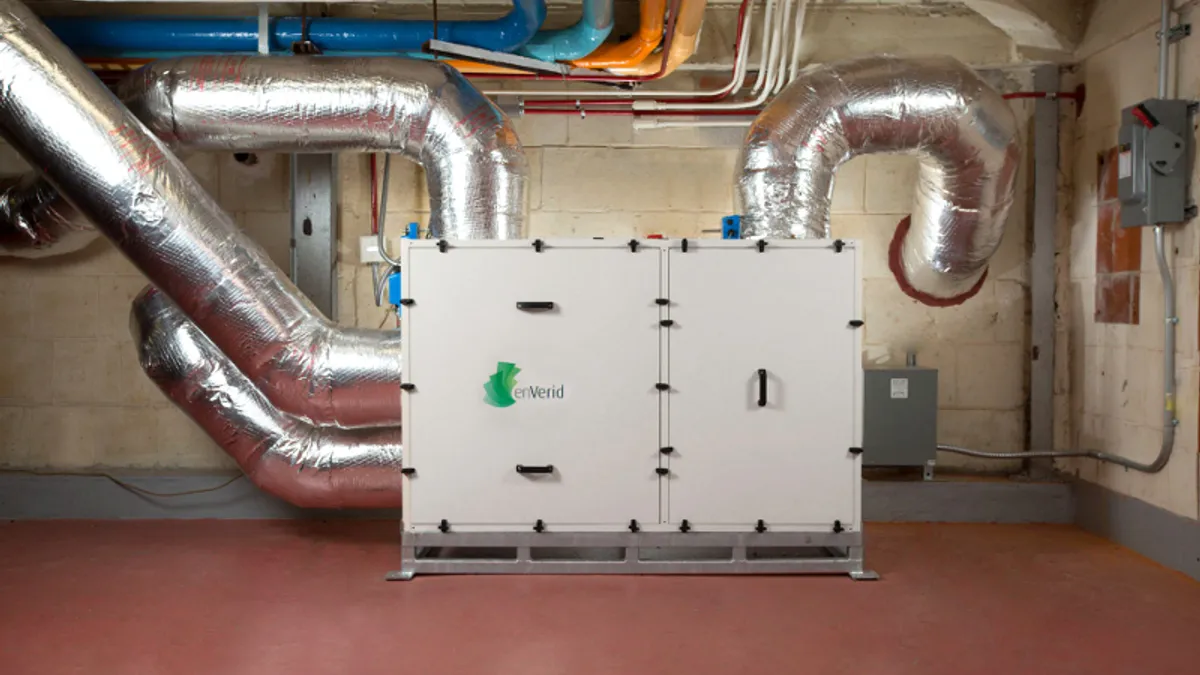Dive Brief:
- The Energy Trust of Oregon provided $19 million to schools for energy efficiency projects that include lighting, ventilation, insulation and other issues, District Administration reports. So far, the projects backed by the organization have saved schools in the state $7.4 million.
- In one example, Myrtle Crest Elementary in Oregon spent $12,000 to update its boiler, using $9,000 from Energy Trust and the rest was funded through other incentives. The retrofit made the boiler more efficient without having to totally replace it, which would have cost hundreds of thousands of dollars.
- Replacing fluorescent light bulbs with LEDs, upgrading cafeteria kitchens and replacing roofs are other types of sustainability projects that can save money in the long run by raising the “energy IQ” of a building.
Dive Insight:
Prior to the pandemic, the U.S. Government Accountability Office estimated 41% of America’s school districts needed to upgrade or replace ventilation or air conditioning in at least half of their buildings, which is about 36,000 schools nationwide. Although the coronavirus pandemic has emphasized masks and cleaning, upgrading the air systems of school buildings is also important to prevent the spread of the virus. Stakeholders are urging lawmakers to make money available to schools in future federal coronavirus relief packages.
According to a 2011 report by the U.S. Environmental Protection Agency, school districts spend approximately $8 billion annually on energy costs, and $2 billion of that can be saved by improving energy efficiency. Energy audits help schools identify what investments would return the highest yields. That same year, The Central Regional School District in Bayville, New Jersey, reported it had saved $400,000 in two years by implementing an energy management and conservation plan.
In California, Gov. Gavin Newsom recently signed Assembly Bill 841. The bill creates the School Reopening Ventilation and Energy Efficiency Verification and Repair Program, which gives $600 million to fund testing and adjust and repair heating, ventilation and air conditioning (HVAC) systems in public schools for the next three years. Over the past decade, the majority of classrooms assessed in the state were not adequately ventilated, according to EdSource. One study found only about 15% of classrooms met the state’s ventilation standard.












